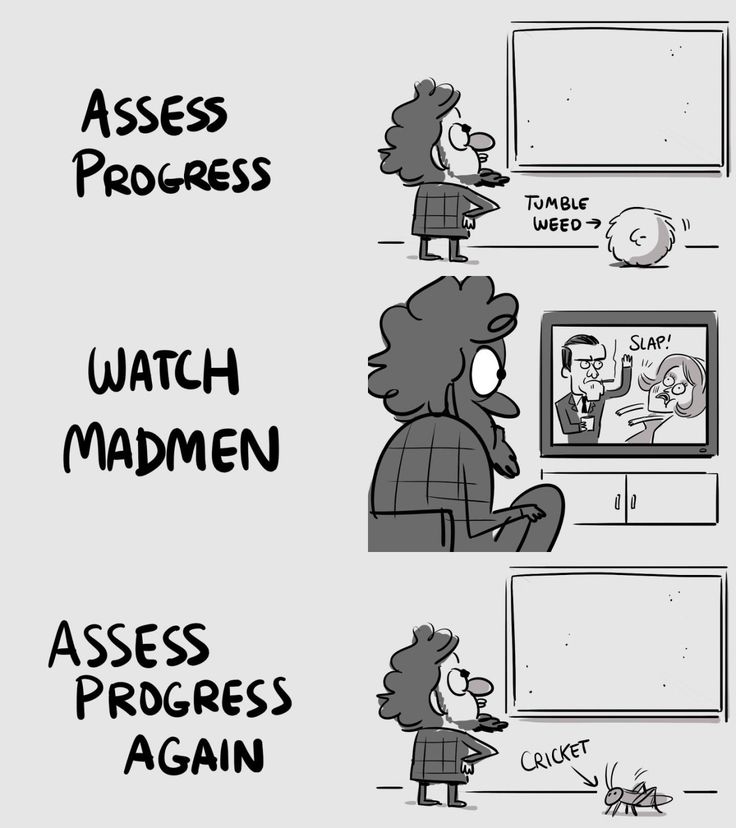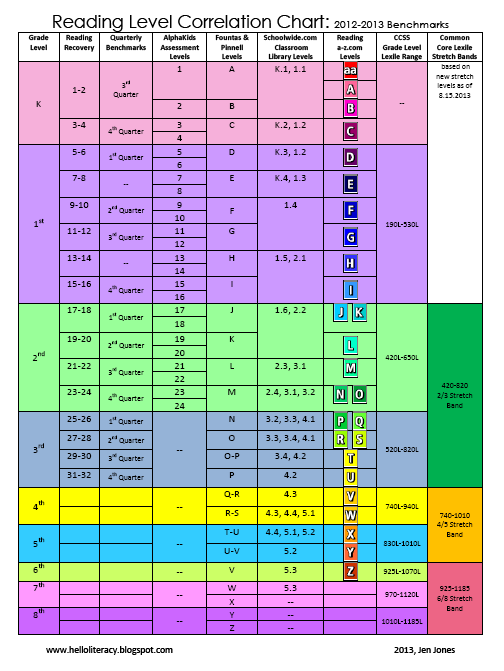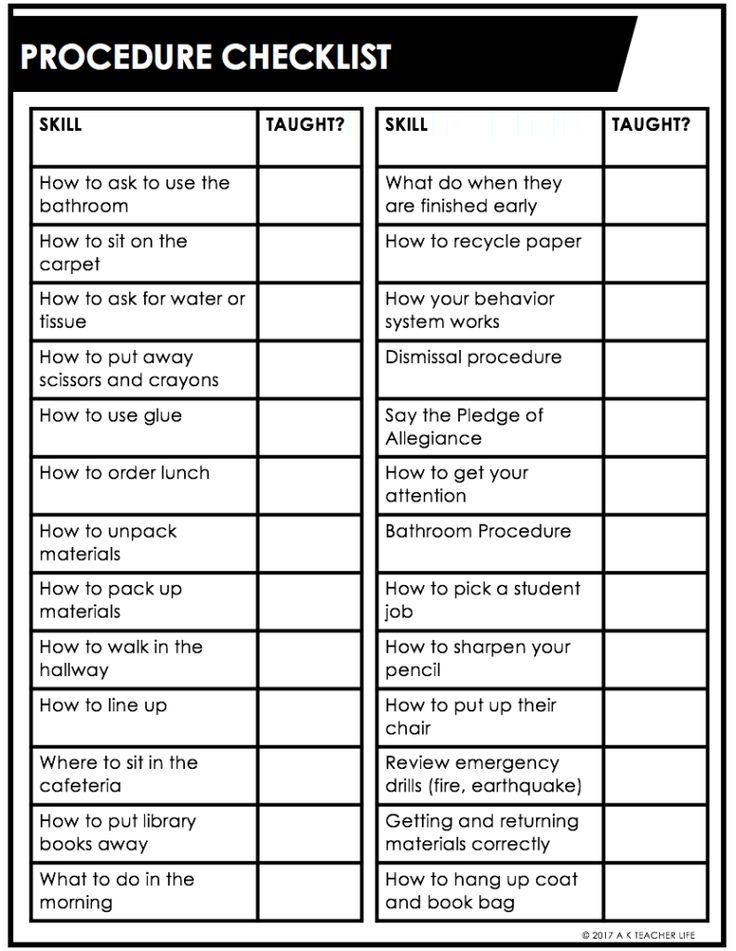Story about gravity
Who He Was, Why Apples Are Falling
Legend has it that Isaac Newton formulated gravitational theory in 1665 or 1666 after watching an apple fall and asking why the apple fell straight down, rather than sideways or even upward.
"He showed that the force that makes the apple fall and that holds us on the ground is the same as the force that keeps the moon and planets in their orbits," said Martin Rees, a former president of Britain's Royal Society, the United Kingdom's national academy of science, which was once headed by Newton himself.
"His theory of gravity wouldn't have got us global positioning satellites," said Jeremy Gray, a mathematical historian at the Milton Keynes, U.K.-based Open University. "But it was enough to develop space travel."
Isaac Newton, Underachiever?
Born two to three months prematurely on January 4, 1643, in a hamlet in Lincolnshire, England, Isaac Newton was a tiny baby who, according to his mother, could have fit inside a quart mug. A practical child, he enjoyed constructing models, including a tiny mill that actually ground flour—powered by a mouse running in a wheel.
Admitted to the University of Cambridge on 1661, Newton at first failed to shine as a student.
In 1665 the school temporarily closed because of a bubonic plague epidemic and Newton returned home to Lincolnshire for two years. It was then that the apple-falling brainstorm occurred, and he described his years on hiatus as "the prime of my age for invention."
Despite his apparent affinity for private study, Newton returned to Cambridge in 1667 and served as a mathematics professor and in other capacities until 1696.
Isaac Newton: More than Master of Gravity
Decoding gravity was only part of Newton's contribution to mathematics and science. His other major mathematical preoccupation was calculus, and along with German mathematician Gottfried Leibniz, Newton developed differentiation and integration—techniques that remain fundamental to mathematicians and scientists.
Meanwhile, his interest in optics led him to propose, correctly, that white light is actually the combination of light of all the colors of the rainbow. This, in turn, made plain the cause of chromatic aberration—inaccurate color reproduction—in the telescopes of the day.
To solve the problem, Newton designed a telescope that used mirrors rather than just glass lenses, which allowed the new apparatus to focus all the colors on a single point—resulting in a crisper, more accurate image. To this day, reflecting telescopes, including the Hubble Space Telescope, are mainstays of astronomy.
Following his apple insight, Newton developed the three laws of motion, which are, in his own words:
- Newton's Law of Inertia: Every object persists in its state of rest or uniform motion in a straight line unless it is compelled to change that state by forces impressed upon it.
- Newton's Law of Acceleration: Force is equal to the change in momentum (mV) per change in time.
 For a constant mass, force equals mass times acceleration [expressed in the famous equation F = ma].
For a constant mass, force equals mass times acceleration [expressed in the famous equation F = ma]. - Newton's Law of Action and Reaction: For every action, there is an equal and opposite reaction.
Newton published his findings in 1687 in a book called Philosophiae Naturalis Principia Mathematica (Mathematical Principles of Natural Philosophy) commonly known as the Principia.
"Newton's Principia made him famous—few people read it, and even fewer understood it, but everyone knew that it was a great work, rather like Einstein's Theory of Relativity over two hundred years later," writes mathematician Robert Wilson of the Open University in an article on a university website.
Isaac Newton's "Unattractive Personality"
Despite his wealth of discoveries, Isaac Newton wasn't well liked, particularly in old age, when he served as the head of Britain's Royal Mint, served in Parliament, and wrote on religion, among other things.
"As a personality, Newton was unattractive—solitary and reclusive when young, vain and vindictive in his later years, when he tyrannized the Royal Society and vigorously sabotaged his rivals," the Royal Society's Rees said.
Sir David Wallace, director of the Isaac Newton Institute for Mathematical Sciences in Cambridge, U.K., added, "He was a complex character, who also pursued alchemy"—the search for a method to turn base metals into gold—"and, as Master of the Mint, showed no clemency towards coiners [counterfeiters] sentenced to death."
In 1727, at 84, Sir Isaac Newton died in his sleep and was buried with pomp and ceremony in Westminster Abbey in London.
Gravity
Gravity- Humans only recently (like in the last 300 years) realized what Gravity is all about.

- Greek philosophers thought that the planets and stars were part of the gods' realm and followed a "natural motion." They did not realize that Gravity is involved. The Greeks' ideas stuck around until the 16th century.
- Beginning in the 1500s, though, astronomers like Galileo and Brahe discovered that the earth and other planets revolved around the sun. Kepler showed that they moved in an eliptical orbit, not a circle. The question was why.
- Sir Isaac Newton was an English mathematician and mathematician and physicist who lived from 1642-1727.
- The legend is that Newton discovered Gravity when he saw a falling apple while thinking about the forces of nature.
- Whatever really happened, Newton realized that some force must be acting on falling objects like apples because otherwise they would not start moving from rest.

- Newton also realized that the moon would fly off away from Earth in a straight line tangent to its orbit if some force was not causing it to fall toward the Earth. The moon is only a projectile circling around the Earth under the attraction of Gravity.
- Newton called this force "gravity" and determined that gravitational forces exist between all objects.
- Using the idea of Gravity, Newton was able to explain the astronomical observations of Kepler.
- The work of Galileo, Brahe, Kepler, and Newton proved once and for all that the Earth wasn't the center of the solar system. The Earth, along with all other planets,orbits around the sun.
- Two astronomers, J.C. Adams and U.J.J. LeVerrier, later used the concept of Gravity to predict that the planet Neptune would be discovered. They realized that there must be another planet exerting a gravitational force on Uranus because Uranus had odd perturbations in its orbit.
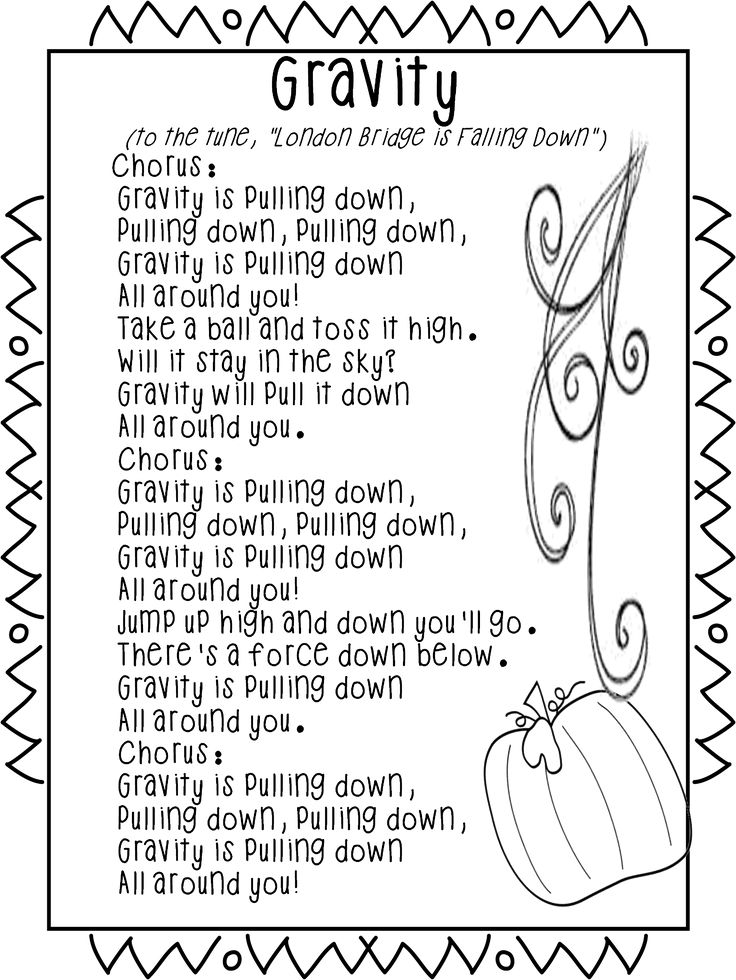 (Perturbations are deviations in orbits.)
(Perturbations are deviations in orbits.)
- Einstein developed a whole new idea about Gravity.
- According to Einstein, Gravity arises from the "warping" of space and time.
- Einstein's new theory of Gravity explains a number of phenomena that would violate Newton's theory. For example, light bends when passing near massive objects like the Sun. And a clock raised above the Earth speeds up relative to a clock on the surface.
- Gravity is a force of attraction that exists between any two objects. There is a force of gravity between the sun and the Earth, between the Earth and us, and even between two marbles.
- Projectiles, satellites, planets, galaxies, and clusters of galaxies are all influenced by Gravity.
- Gravity is the weakest of the four known forces of nature, yet the most dominant force.
 Even though it's the weakest force, Gravity holds together entire solar systems and galaxies!
Even though it's the weakest force, Gravity holds together entire solar systems and galaxies! - The law of universal gravitation says that every object attracts every other object with a force that, for any two objects, is directly proportional to the mass of each object and inversely proportional to the square of the distance between the two objects.
- The gravitational formula is
- This is an example of the "inverse-square law": gravitational force varies as the inverse square of the distance between the two objects. As a result, the effect of Gravity falls rapidly as the distance increases between two objects.
- The best current estimate of G is that it eqauls about 6.67259 10-11 newton-square meter per square kilogram.
- The gravitational field for a planet, g, equals GM/Rsquared, where G is the mass of the planet and R is the distance of the object from the center of the planet (the planet's radius if the object is on the surface of the planet).
 This means that Gravity is greater where a planet is more massive and where it has a smaller radius. So even though Mars has only about 1/10th of the mass of the Earth, the gravitational force on the surface of Mars is more than 1/10th that on the surface of the Earth -- because Mars' surface is closer to the planet's surface!
This means that Gravity is greater where a planet is more massive and where it has a smaller radius. So even though Mars has only about 1/10th of the mass of the Earth, the gravitational force on the surface of Mars is more than 1/10th that on the surface of the Earth -- because Mars' surface is closer to the planet's surface! - The force of attraction between you and the Earth is your weight.
- Gravity determines the "escape speed" for an object like a rocket. The stronger the gravitational pull of the object, the larger the escape speed. The following chart shows the escape speed for the sun, two planets, and the Earth's moon.
| Sun | 620 km/s |
| Jupiter | 60.2 km/s |
| Earth | 11.2 km/s |
| Moon | 2.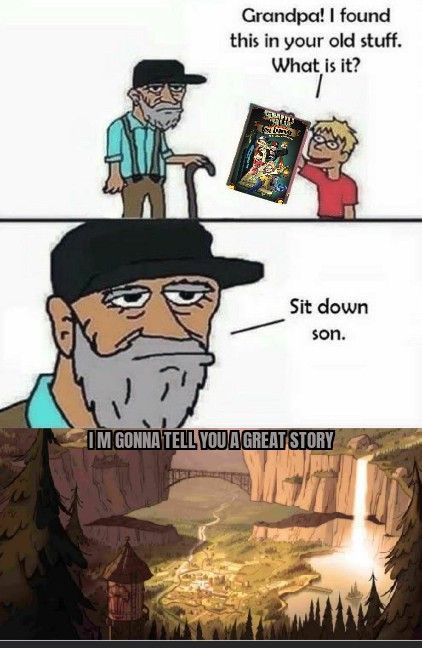 4 km/s 4 km/s |
- The first reliable measurement of G was made by Henry Cavendish in 1798! He calculated that G was equal to 6.754 10-11 newton-square meter per square kilogram (compared to today's calculation of 6.67259).
- Some theories suggest that G is changing over time and that G varies somewhat in different regions of space!
- No matter how great the distance between an object and the Earth, the Earth's gravitational force does not drop to 0. The gravitational influence of every object is exerted through all space.
- Earth is round because of Gravity. Earth attracted itself together before it became solid.
- There is gravitational attraction between two marbles, but we don't notice it because the force between each of the marbles and the Earth is so much greater.
- A person who weighs 100 pounds on the Earth would weigh only 17 pounds standing on the same scale on the moon.
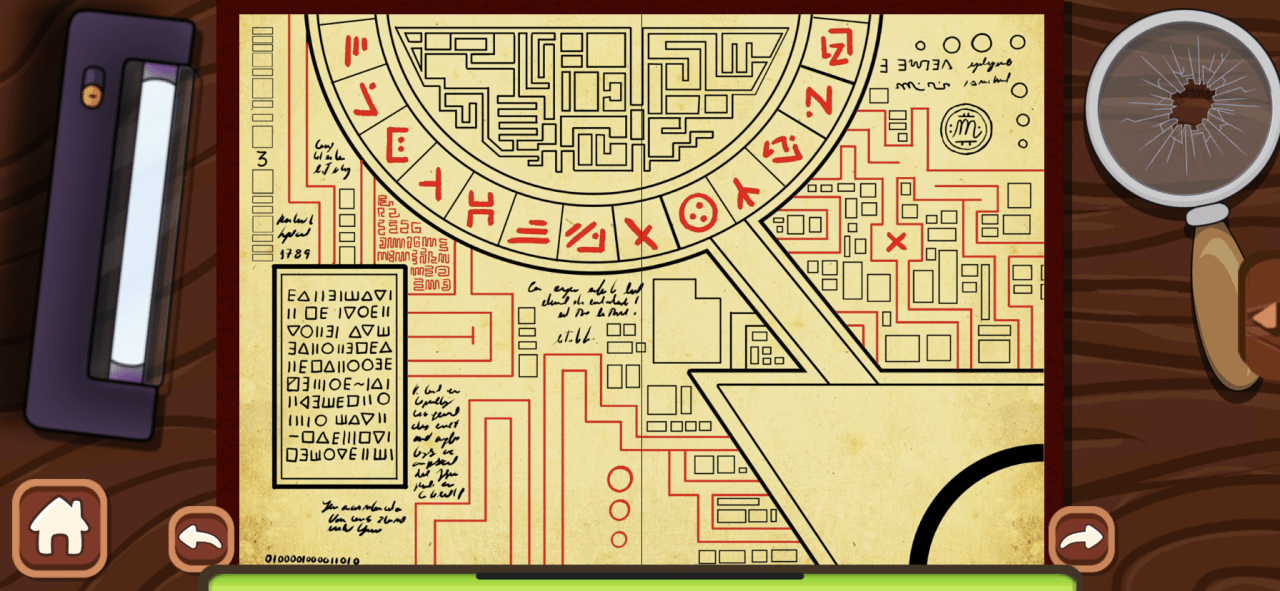
- According to Albert Einstein, there is no difference between the acceleration of Gravity and any other acceleration. If you were in a rocket accelerating at 32.2 ft/sec2, it would feel just like gravity on the Earth.
- There are no known anti-gravity devices (ah shucks)! But the effects of Gravity can be canceled by free-fall or by placing objects in orbit.
*A web presentation on Gravity. (5 out of 5)
Exploring Gravity. (4 out of 5)
NASA's Gravity Page (5 out of 5)
A page on gravatation. (3 out of 5)
Institute for gravation research. (3 out of 5)
So why not
Life with and without gravity
The gravitational field, an invariable natural factor of our existence, has played a major role in the evolution of man and land animals. However, gravitational physiology - the science of the place of gravitational forces and interactions in the structural and functional organization of living systems - arose not so long ago, only half a century ago. To understand to what extent living organisms depend on the force of gravity, it was necessary to overcome this attraction, that is, to go into space. Specialists in gravitational physiology meet regularly to talk about their research and discuss problems. The next, 25th International Symposium on Gravitational Physiology was held in Moscow in June 2004. Scientists from Russia, the USA, France, Germany, Japan and other countries took part in it. The symposium was attended by a special correspondent of the journal "Science and Life", Candidate of Physical and Mathematical Sciences E. LOZOVSKAYA.
However, gravitational physiology - the science of the place of gravitational forces and interactions in the structural and functional organization of living systems - arose not so long ago, only half a century ago. To understand to what extent living organisms depend on the force of gravity, it was necessary to overcome this attraction, that is, to go into space. Specialists in gravitational physiology meet regularly to talk about their research and discuss problems. The next, 25th International Symposium on Gravitational Physiology was held in Moscow in June 2004. Scientists from Russia, the USA, France, Germany, Japan and other countries took part in it. The symposium was attended by a special correspondent of the journal "Science and Life", Candidate of Physical and Mathematical Sciences E. LOZOVSKAYA.
Science and life // Illustrations
Science and life // Illustrations
The immersion model (immersion in water through a film or in a wetsuit) allows you to simulate many of the effects of weightlessness.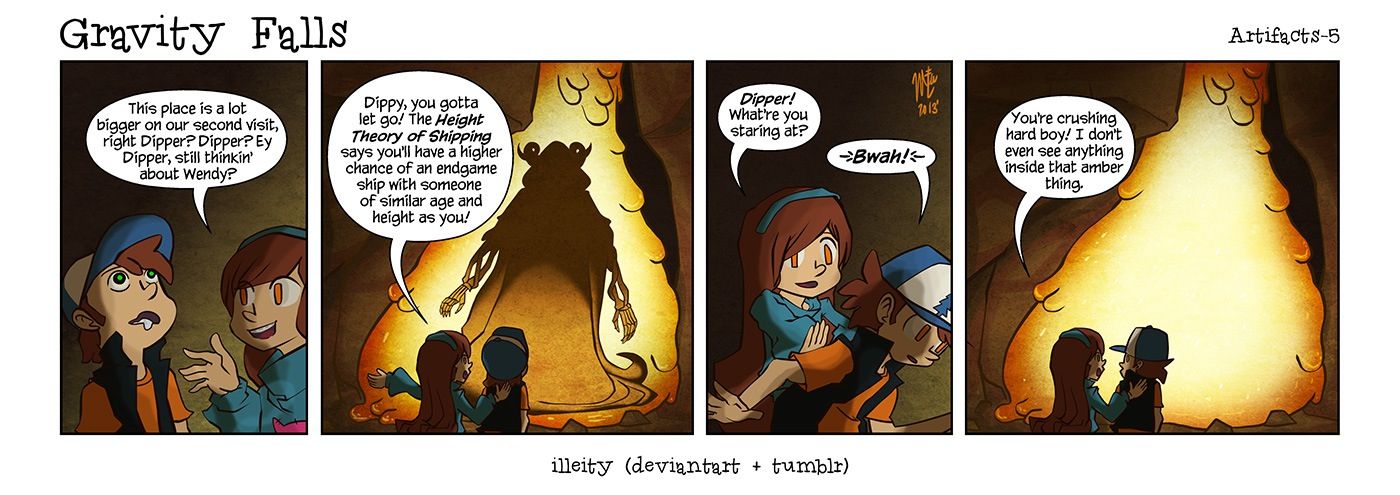
The soleus muscle, so named because of its flat shape, bears the main burden of maintaining the body in an upright position.
Special shoe that simulates a support load. The pressure on the foot is exerted by compressed air pumped by the compressor in the rhythm of walking or running.
If the bone is not under normal support load, the thickness of the cancellous bone layers decreases.
‹
›
View full size
The attraction of the Earth is so natural that we hardly notice it. And how can one notice a force that always acts and is practically constant in magnitude? Nevertheless, gravity is "taken into account" in almost all functional systems of the body, at all levels, from cells to the skeleton. But for a person to finally pay attention to gravity, it took a jump into space, to a place where the force of gravity practically disappears. Of course, Jules Verne suggested weightlessness, and Tsiolkovsky proposed the idea of an orbital station, but still, only after the first launches of animals and humans into orbit did people for the first time truly realize how strongly the functioning of a living organism depends on the magnitude of gravitational forces.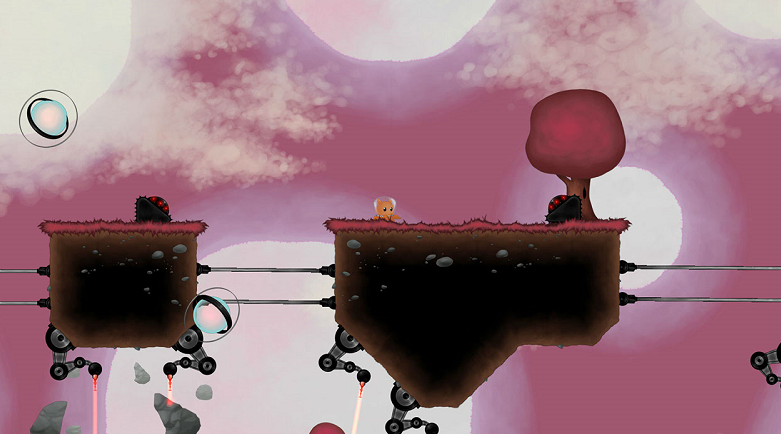 It was with the beginning of the space age that gravitational biology as a science arose. In our country, such studies are concentrated at the Institute of Biomedical Problems of the Russian Academy of Sciences.
It was with the beginning of the space age that gravitational biology as a science arose. In our country, such studies are concentrated at the Institute of Biomedical Problems of the Russian Academy of Sciences.
EVOLUTIONARY EXCURSION, OR ACQUISITION OF A FOCUS
Life, as is known, originated in the ocean, and the first vertebrates that inhabited the water column were in a state that can be called pseudo weightlessness. A more precise definition for these conditions is supportlessness. And I must say that fish and other marine vertebrates are excellently adapted to existence in an environment without support, they have fairly well developed systems of movement and orientation in three-dimensional space. Gravitational problems arose with the release of animals on land. It was necessary not only to maintain the position of the body in space (after all, there is no longer an buoyant Archimedean force), but also to move around, to get food. Belly crawling or jumping is not the most convenient mode of locomotion, and is only available to relatively small animals. (By the way, the largest vertebrates - whales - can only exist in the ocean due to the Archimedean force that compensates for gravity.) On land, large animals had to lift their bodies above the ground, and from that moment all the laws of gravitational physiology worked.
(By the way, the largest vertebrates - whales - can only exist in the ocean due to the Archimedean force that compensates for gravity.) On land, large animals had to lift their bodies above the ground, and from that moment all the laws of gravitational physiology worked.
We needed mechanisms to resist gravity, so evolution and the forces that drove it built the gravity factor into almost every system. Not only a strengthened musculoskeletal system with developed limbs began to form, holding the body in space above the ground at rest and in motion, but also a system for providing all parts of the body with oxygen and nutrients - a powerful heart pump capable of driving blood up. And when the ancestors of man got on their feet, it also required a restructuring of the mechanisms of the nervous system that control the movement of the limbs (the young French scientist J. Courten spoke about this at the symposium).
SEE IN SPACE, STUDY ON EARTH
Although gravitational physiology is closely related to space research, this science is quite earthly. Its achievements have already found (and will still find!) applications in medicine for the treatment of diseases of the nervous system and the motor apparatus. Moreover, the main experiments with human participation are now being carried out not in space, but on Earth. Space allows us to reveal the role of gravity, but does not allow us to correctly study it. Physical exercise, which helps astronauts survive in orbit, makes it impossible to conduct "clean" experiments. In addition, on Earth, next to the test subject, there is always a team of doctors ready to immediately provide assistance. On board the space station the situation is different, there is no way to risk the health and efficiency of the crew.
Its achievements have already found (and will still find!) applications in medicine for the treatment of diseases of the nervous system and the motor apparatus. Moreover, the main experiments with human participation are now being carried out not in space, but on Earth. Space allows us to reveal the role of gravity, but does not allow us to correctly study it. Physical exercise, which helps astronauts survive in orbit, makes it impossible to conduct "clean" experiments. In addition, on Earth, next to the test subject, there is always a team of doctors ready to immediately provide assistance. On board the space station the situation is different, there is no way to risk the health and efficiency of the crew.
Strictly speaking, a spacecraft or satellite in near-Earth orbit does not provide a state of complete weightlessness. A small force of gravity is still there, and such conditions are called microgravity. Real weightlessness can be obtained in an apparatus that flies at a constant speed and does not experience any gravitational perturbations from other celestial bodies. And flying in orbit around the planet is, in fact, a long, long fall, right up to the landing itself. However, this difference, which is important from the point of view of physics, does not matter for physiology, and the body perceives microgravity as a complete absence of gravity.
And flying in orbit around the planet is, in fact, a long, long fall, right up to the landing itself. However, this difference, which is important from the point of view of physics, does not matter for physiology, and the body perceives microgravity as a complete absence of gravity.
On Earth, the state of weightlessness can be obtained during a long jump (before opening the parachute) or during the flight of an aircraft along a parabolic descent trajectory. Quite a few experiments with parabolic flights are carried out by American scientists, but the state of weightlessness lasts 40 seconds - negligible compared to even one revolution of a spacecraft around the Earth.
Much more convenient are experimental models that mimic some of the effects of reduced gravity. One of these wonderful models, invented in our country back in 1973, - immersion, or dry immersion. A pool of water is covered with a freely placed waterproof film, a person lies on this film, but does not come into contact with the water, the water closes over the person in the film, and one head sticks out. Such a model just provides the very security that exists in the ocean.
Such a model just provides the very security that exists in the ocean.
The study of gravitational effects is not limited to microgravity. Serious consequences, and manifesting themselves immediately, have hypergravity, or overload. Such states arise, for example, during the takeoff and landing of aircraft and spacecraft, but they are modeled and studied using a centrifuge.
MUSCLE TONE HELPS VESSELS
How does the organism know that the gravitational field is this, and not another, that it exists or that it does not exist, that its direction has changed?
In animals and humans, the most important gravitational-sensitive system is the cardiovascular system. Blood tends to sink under the influence of gravity, but certain systems have developed in the body to counteract this factor. Including the baroreceptor system that regulates blood pressure in the upper body, in the carotid arteries that supply the brain, which is vital. Baroreceptors are cells whose nerve endings respond to blood pressure. For example, if the pressure drops, they turn on the pressure maintenance system. But if the pressure drop is too sharp and the baroreceptors do not have time to work, loss of consciousness occurs. This situation is familiar to many, if not all people. A person wakes up in the morning, gets up - dizzy. A patient who constantly lies in bed and has adapted to a horizontal position develops gravitational, or orthostatic, insufficiency: any attempt to take a vertical position (“orthostasis” in Latin means “standing upright”) causes great difficulties.
For example, if the pressure drops, they turn on the pressure maintenance system. But if the pressure drop is too sharp and the baroreceptors do not have time to work, loss of consciousness occurs. This situation is familiar to many, if not all people. A person wakes up in the morning, gets up - dizzy. A patient who constantly lies in bed and has adapted to a horizontal position develops gravitational, or orthostatic, insufficiency: any attempt to take a vertical position (“orthostasis” in Latin means “standing upright”) causes great difficulties.
To deal with this situation, you need to understand how the maintenance of orthostatic function is organized. In recent years, it has become clear that in addition to baroreceptors, there is another important mechanism for regulating blood pressure - the so-called muscle pump. Previously, it was not given much importance, since the veins through which blood rises from the lower body to the heart do not have such a smooth muscle layer as the arteries, that is, they have almost no pumping action of their own. So how does blood flow happen? Corresponding Member of the Russian Academy of Sciences Inesa Benediktov at Kozlovskaya put forward a hypothesis about the role of muscle tone in the functioning of the vascular system. Under normal conditions, a person constantly tenses the muscles of the limbs, the abdominal press. The task of keeping the body and moving requires constant tone from them. This muscle tone allows you to push the blood purely mechanically. If the tone is reduced, blood pushing deteriorates sharply.
So how does blood flow happen? Corresponding Member of the Russian Academy of Sciences Inesa Benediktov at Kozlovskaya put forward a hypothesis about the role of muscle tone in the functioning of the vascular system. Under normal conditions, a person constantly tenses the muscles of the limbs, the abdominal press. The task of keeping the body and moving requires constant tone from them. This muscle tone allows you to push the blood purely mechanically. If the tone is reduced, blood pushing deteriorates sharply.
Quite recently, in joint Russian-French studies aboard the International Space Station and in experiments with immersion, it was shown that in weightlessness (or in its simulation) the compliance, softness of veins increases. At the symposium, these data were reported by Candidate of Medical Sciences G. Fomina and Professor O. L. Vinogradova.
WE FEEL GRAVITY… WITH THE SOLES
So, gravitational changes in the work of the cardiovascular system are associated with muscle tone, but what does this muscle tone depend on? The most gravity-sensitive human muscle is the soleus.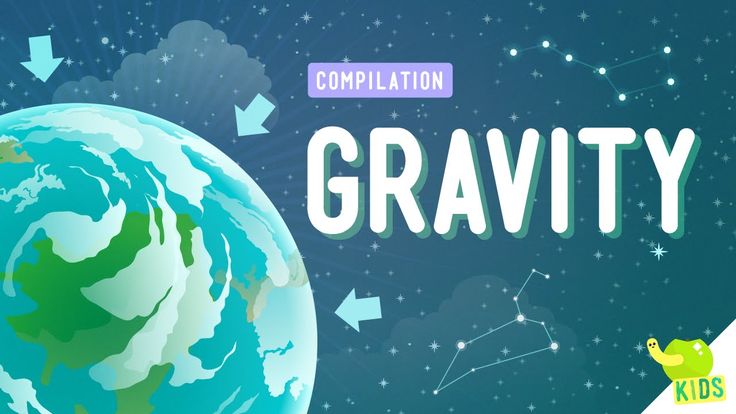 It is located on the back surface of the lower leg in depth, immediately above the Achilles tendon, and is closed by two heads of the gastrocnemius muscle. The soleus muscle alone "pulls" 70 kg of a person's weight, and when he runs and jumps - even more. The Americans calculated that this muscle, under dynamic loads, accounts for up to 10 body weights, of course, once, at the moment of push.
It is located on the back surface of the lower leg in depth, immediately above the Achilles tendon, and is closed by two heads of the gastrocnemius muscle. The soleus muscle alone "pulls" 70 kg of a person's weight, and when he runs and jumps - even more. The Americans calculated that this muscle, under dynamic loads, accounts for up to 10 body weights, of course, once, at the moment of push.
In weightlessness or in experiments simulating it, the tone of the soleus muscle drops sharply. How does the muscle know that the level of gravity has changed? Of course, there are some signals from the nervous system, but in the muscle tissue itself, apparently, there are cellular and molecular sensors. Now their study has just begun, ideas about mechanosensitive channels in the cell membrane have appeared, but this area still remains a blank spot in science.
But it was possible to reveal the existence of a completely new sense organ. This is not yet in the textbooks, but gravitational physiologists have already recognized the existence of a new sensory system that reacts to changes in gravity - the support perception system. The role of new sense organs is performed by the soles of the feet, or rather, the receptors of deep skin sensitivity located in them - the so-called bodies of Vater-Pacini. They were discovered as early as the 19th century, but their role in gravireception has only recently been established. Of course, we perceive with the soles not the weight of the body, but the reaction force of the support, equal to the weight in magnitude and opposite in direction, but this does not change the physiological essence.
The role of new sense organs is performed by the soles of the feet, or rather, the receptors of deep skin sensitivity located in them - the so-called bodies of Vater-Pacini. They were discovered as early as the 19th century, but their role in gravireception has only recently been established. Of course, we perceive with the soles not the weight of the body, but the reaction force of the support, equal to the weight in magnitude and opposite in direction, but this does not change the physiological essence.
Exactly how Vater-Pacini bodies work is not yet clear. Scientists believe that the mechanical impact of the support reaction force is transmitted through the nervous system and affects the state of certain cells of the spinal cord - motor neurons. As a result, depending on the reaction force of the support, the systems that control the work of those muscles that support the posture are turned on or off - this is the so-called posture-tonic system. Another muscular system - locomotor - provides fast and sharp movements in space. By the way, the presence of two muscle systems is a discovery of gravitational physiology associated with the name of I. B. Kozlovskaya. It is the tonic system that resists gravity.
By the way, the presence of two muscle systems is a discovery of gravitational physiology associated with the name of I. B. Kozlovskaya. It is the tonic system that resists gravity.
A favorite experimental model for studying muscle tone is immersion, which was discussed above. This model really provides security. According to the laws of hydrostatics, the pressure is the same on all sides, and therefore the body does not feel pressure. However, if the support is artificially imitated, then muscle tone can be maintained at the proper level even under immersion conditions. To do this, the Institute of Biomedical Problems invented a unique simulator, which is a shoe with a pneumatic drive. Air, compressing, exerts periodic pressure on the foot, simulating walking. With such training, the muscle tone of the subjects after seven days of immersion in water remained normal.
Scientists are trying to understand how muscle activity is regulated at the cellular level. How does the muscle fiber protein synthesis system know to stop working? How does the protein breakdown system receive the signal - attack, increase activity? It is clear that there is a system that "feels" whether the muscle is working or not.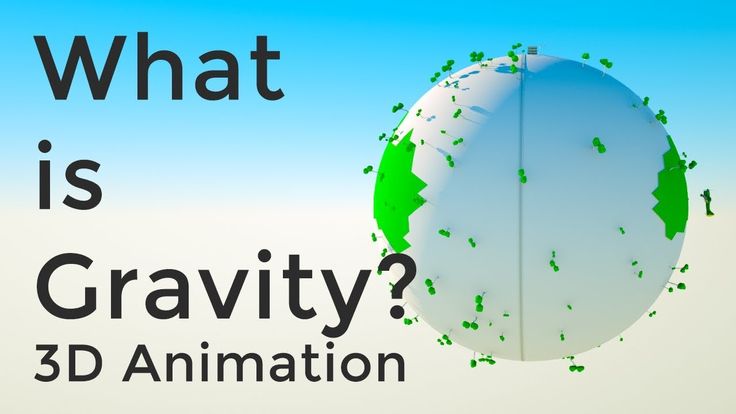 One possible mechanism is related to calcium ions. Recently it became known that during unloading (and, of course, in the absence of muscle contractions), the level of calcium in muscle fibers is increased. Interestingly, if excess calcium is bound, many of the adverse effects of weightlessness can be avoided. B. S. Shenkman spoke about these first experiments with calcium binding at the symposium.
One possible mechanism is related to calcium ions. Recently it became known that during unloading (and, of course, in the absence of muscle contractions), the level of calcium in muscle fibers is increased. Interestingly, if excess calcium is bound, many of the adverse effects of weightlessness can be avoided. B. S. Shenkman spoke about these first experiments with calcium binding at the symposium.
GRAVITY, SALT AND WATER
The fact that the human body consists of 70% water has long been known, but this water, in accordance with the model accepted in physiology, is located in different sectors: intracellular fluid, extracellular fluid (this includes the fluids of the cavities - abdominal, thoracic, cerebral) and vascular (blood). Evolution has ensured that not only the composition, but also the volume of body fluid is maintained constant, since this gives humans and large animals the greatest freedom in adapting to various environmental conditions.
How is such constancy of composition and volume ensured? In a healthy person, the mechanisms of both passive regulation, based on physical and chemical laws, and with the help of biologically active substances work. When something goes wrong, edema occurs or diabetes insipidus occurs, in which the body is not able to retain the fluid you drink.
When something goes wrong, edema occurs or diabetes insipidus occurs, in which the body is not able to retain the fluid you drink.
Before man flew into space, scientists did not suspect that the function of maintaining the composition and volume of liquid depends on gravity. But it turns out that the body reacts to a decrease in gravity by directed efforts to reduce the volume of extracellular fluid. The volume of intravascular fluid also decreases. If a person had to spend the rest of his life on board a space station, then this reaction should be called adaptive: in weightlessness with a reduced volume of liquid, it is easier to live and work. But when returning to Earth after long space flights (longer than several days), a condition arises in which the heart cannot normally supply blood to the brain. And the point is not only a decrease in muscle tone, but also the fact that the cardiovascular system simply does not have enough blood volume to fill the entire vascular bed.
It would seem that it is enough to give a person a drink of water or a solution of salts, but everything is not so simple. The systems of regulation of water-salt metabolism take time to rebuild, and at first the fluid in the body does not linger. Martina Heer from the Cologne Center for Aerospace Physiology made a presentation at the symposium. She said that according to the data obtained in the flights of German cosmonauts, under conditions of real weightlessness, sodium begins to be deposited in the skin and connective tissues, but not in the form of an ion, but in a protein-bound form. A similar mechanism of "storage" of minerals exists in mammals that hibernate. Why this happens in astronauts is not yet clear.
SPACE OSTEOPOROSIS AND HOW TO FIGHT IT
The study of the skeletal system is one of the most important branches of gravitational physiology. The lack of stress on the bones in microgravity leads to a decrease in bone mineral density, which is very similar to osteoporosis. Bones lose calcium unevenly. Most of all, it is washed out from the areas of the bone that form the joints, that is, they experience the greatest load in terrestrial conditions. In the lower extremities, the process of calcium loss is more pronounced than in the upper ones, and calcium is even deposited in the skull. As studies by Doctor of Medical Sciences V.S. Oganov showed, the process of restoring normal mineral density takes 2-3 times more time than a space flight lasts, and after long space expeditions it stretches for years.
Bones lose calcium unevenly. Most of all, it is washed out from the areas of the bone that form the joints, that is, they experience the greatest load in terrestrial conditions. In the lower extremities, the process of calcium loss is more pronounced than in the upper ones, and calcium is even deposited in the skull. As studies by Doctor of Medical Sciences V.S. Oganov showed, the process of restoring normal mineral density takes 2-3 times more time than a space flight lasts, and after long space expeditions it stretches for years.
Preventing the loss of calcium is an urgent task, since the astronaut, returning to Earth, experiences landing overloads. If the bone has lost strength, overloading can lead to a compression fracture of the vertebrae or even to a fracture of tubular bones.
To study the processes in bone tissue in terrestrial experiments, a model with hanging rats by the tail is used. In this case, the rat rests on the floor with its front paws, but the rear ones, as it were, are in a state of weightlessness. Under normal conditions, the bones of the skeleton of the rat grow until old age, and when suspended, their growth is inhibited. The process of remodeling - the constant renewal of bone tissue - also slows down. In the experiments conducted by I. M. Larina, calcium loss in rats was prevented with the help of ibandronate, a drug that slows down the resorption of bone tissue. Perhaps in the near future this drug will be part of the space on-board first aid kit.
Under normal conditions, the bones of the skeleton of the rat grow until old age, and when suspended, their growth is inhibited. The process of remodeling - the constant renewal of bone tissue - also slows down. In the experiments conducted by I. M. Larina, calcium loss in rats was prevented with the help of ibandronate, a drug that slows down the resorption of bone tissue. Perhaps in the near future this drug will be part of the space on-board first aid kit.
CELLS NOT EXCEPTION
The first studies on cells, which were carried out before human spaceflight, gave conflicting results. The research technique was imperfect, the models were not worked out, it happened that the cells died, and then skeptics began to assert that the cosmos was closed to humans. But as the experimental equipment and models improved, it turned out that at the cellular level, everything is not so scary. Cells in space multiplied, produced their usual substances. For a certain period, the opinion prevailed that weightlessness does not affect cells at all, that the cell is too small, it does not feel the force of gravity, and only at the physiological level can one catch some effect. And only studies of recent years have convincingly shown that microgravity still affects cells, but its influence is non-destructive, and one of the points of application is the cytoskeleton. Structural elements of the cytoskeleton - actin filaments, which normally evenly fill the volume of the cell, are shifted to the edges. This changes the functioning of both receptors and ion channels. The cell, as it were, adapts its vital activity to the reduced gravity.
And only studies of recent years have convincingly shown that microgravity still affects cells, but its influence is non-destructive, and one of the points of application is the cytoskeleton. Structural elements of the cytoskeleton - actin filaments, which normally evenly fill the volume of the cell, are shifted to the edges. This changes the functioning of both receptors and ion channels. The cell, as it were, adapts its vital activity to the reduced gravity.
Is it possible to somehow use microgravity for biotechnological purposes? Projects for growing cartilage or bone tissue are being discussed, but this requires equipment that is not so easy to place in the limited space of a space station.
So far, simpler, but no less important experiments with immune cells are taking place on the ISS, which L. B. Buravkova spoke about at the symposium. The objects of study were the so-called natural killers, which make up 5-8% of the entire population of lymphocytes, which recognize and destroy tumor cells, as well as cells affected by the virus, and cells with abnormalities. The first experiments showed that microgravity does not violate intercellular interaction, but the activity of killers can change. Now scientists have begun to study the effect of microgravity on stem cells.
The first experiments showed that microgravity does not violate intercellular interaction, but the activity of killers can change. Now scientists have begun to study the effect of microgravity on stem cells.
SPACE METHODS IN THE TREATMENT OF EARTH DISEASES
One of the goals of gravitational physiology is to understand how weightlessness affects the health of astronauts and to help develop preventive measures. However, many of the results obtained may be in demand in the practice of terrestrial medicine.
A very promising area of research is the behavior of muscle enzymes in myopathies. These diseases are severe, often leading to death at a young age. For example, with Duchenne myodystrophy, patients rarely live to be 20 years old, and in Russia 3 people per 10 thousand are born with this diagnosis.
In a healthy person, with an intense muscular load, a rather significant amount of the enzyme creatine phosphokinase is released into the blood from the muscle fibers. Why this happens is not yet entirely clear, apparently, the membrane of muscle cells becomes "leaky" under load. A similar phenomenon, but without great physical exertion, is observed in patients with myopathy, while the concentration of the enzyme in the blood is even higher. But in space and in experiments with immersion, the flow of molecules of this enzyme into the blood is sharply reduced. These results give hope that immersion can reduce the damaging effects of factors that lead to myopathy. In the laboratory of B.S. Shenkman is still conducting relevant animal studies.
Why this happens is not yet entirely clear, apparently, the membrane of muscle cells becomes "leaky" under load. A similar phenomenon, but without great physical exertion, is observed in patients with myopathy, while the concentration of the enzyme in the blood is even higher. But in space and in experiments with immersion, the flow of molecules of this enzyme into the blood is sharply reduced. These results give hope that immersion can reduce the damaging effects of factors that lead to myopathy. In the laboratory of B.S. Shenkman is still conducting relevant animal studies.
Some methods developed in the Department of Sensorimotor Physiology and Prevention, headed by I. B. Kozlovskaya, are already being actively introduced into the clinic. With the help of load suits, cerebral palsy, stroke, and Parkinson's disease are now being treated. The next step is the use of an artificial support - the same pneumatic shoe, which has already been mentioned. It is being tested in the nervous clinic of the Russian State Medical University.
Space research helps to develop new methods of pharmacological action on water-salt metabolism, treatment of conditions associated with dehydration.
HOW TO FLY TO MARS
The report of the Director of the Institute of Biomedical Problems, Academician A.I. Grigoriev, was devoted to the physiological problems of the flight to Mars. The successes of astronautics in recent decades make such a project quite real. Experience has been accumulated in biomedical support for long-term expeditions to orbital stations and flights to the Moon, where the gravitational force is about 6 times less than the Earth's. And after the Moon, the natural closest target for space exploration is Mars. Thanks to unmanned flights, our knowledge of the Red Planet has increased significantly.
What are the main difficulties awaiting a person during such a flight? The minimum estimated duration of the expedition is 500 days, that is, one and a half years, and the flight will take place offline. If a ship with additional food and fuel can always be sent to a station located in near-Earth orbit, then on a long-distance expedition the crew will have to rely only on their own strength. There are a lot of factors that will "undermine" these forces: stress due to being forced to stay in a limited space and an artificial environment, cosmic radiation, and the absence of the usual magnetic field. But above all - a change in the gravitational field. During a manned flight to Mars, a person will encounter different levels of gravity. First, it is hypergravity (overload) during takeoff and landing. Secondly, microgravity (weightlessness) during a long interplanetary flight. Thirdly, hypogravity on the surface of Mars, which is 38% of the earth's gravity.
If a ship with additional food and fuel can always be sent to a station located in near-Earth orbit, then on a long-distance expedition the crew will have to rely only on their own strength. There are a lot of factors that will "undermine" these forces: stress due to being forced to stay in a limited space and an artificial environment, cosmic radiation, and the absence of the usual magnetic field. But above all - a change in the gravitational field. During a manned flight to Mars, a person will encounter different levels of gravity. First, it is hypergravity (overload) during takeoff and landing. Secondly, microgravity (weightlessness) during a long interplanetary flight. Thirdly, hypogravity on the surface of Mars, which is 38% of the earth's gravity.
Overloads are difficult for the body: this is a huge stress for muscles, bones, blood vessels. Metabolism also changes: oxygen consumption increases, body temperature drops, and the circadian rhythm is disturbed. Fortunately, such loads are short-term, and you can prepare for them by training on centrifuges.
It would seem that in comparison with overload, weightlessness should deliver more pleasant sensations. But, as mentioned above, the absence of gravity is fraught with unpleasant consequences for a variety of body systems: there is a redistribution of fluid in the body, the contractility of muscle fibers and bone mineral density decrease, and the risk of fractures and the formation of kidney stones increases.
In space flight, the state of the vestibular apparatus and sensory systems changes. There is a disorder of all forms of visual movements. Moreover, microgravity affects both the speed and accuracy of the visual reaction. But the task of a person in a long flight is not just to withstand the load, but also to maintain the ability to perform complex operator activities. Having flown to Mars, it will be necessary to land a descent module on the surface of the planet, and then start. And for successful work on Mars, it is necessary to quickly adapt to Martian gravity after a long stay in weightlessness.
How to cope with the problem of the adverse effects of weightlessness in a long flight? The first thing that comes to mind is the idea of creating artificial gravity. The idea of artificial gravity created with the help of rotation was first put forward by Tsiolkovsky. It was implemented on the artificial satellite Kosmos-936, in which rats flew. However, the results of the first studies show that artificial gravity does not remove all problems. Now an international project is being carried out to study the physiological effects of artificial gravity, in which Russia, Germany and the United States are participating.
The experience of orbital stations shows that it is more promising to use an onboard simulator complex, which operates on the feedback principle and automatically determines the load required by the astronaut.
In any case, if you send a person to Mars, everything must be done so that he comes back and returns healthy.
REFLECTIONS AFTER THE SYMPOSIUM
Symposiums on gravitational physiology have their own history. mid 19In the 70s, four outstanding scientists: the Americans Arthur Smith and Nello Pace, the Swede Hilding Bjurstedt and Oleg Georgievich Gazenko, at that time the director of the Institute of Biomedical Problems, got together and established the so-called Gravitational Commission, or rather, the Commission on Gravitational Physiology International Union of Physiological Sciences. From the meetings of this commission, regular meetings of specialists studying the effect of gravity on living things began, which take place in an atmosphere of informal, friendly communication.
mid 19In the 70s, four outstanding scientists: the Americans Arthur Smith and Nello Pace, the Swede Hilding Bjurstedt and Oleg Georgievich Gazenko, at that time the director of the Institute of Biomedical Problems, got together and established the so-called Gravitational Commission, or rather, the Commission on Gravitational Physiology International Union of Physiological Sciences. From the meetings of this commission, regular meetings of specialists studying the effect of gravity on living things began, which take place in an atmosphere of informal, friendly communication.
“We all have known each other for a long time, and each such meeting is a holiday,” says B.S. Shenkman, executive secretary of the organizing committee. Almost all experiments in the industry are international. And, unfortunately, our science here has the same problems as the country as a whole. We conduct good, interesting experiments, and fine analytical technologies (including expensive equipment) that allow us to study cellular and molecular biological mechanisms, often only our Western colleagues have mastered.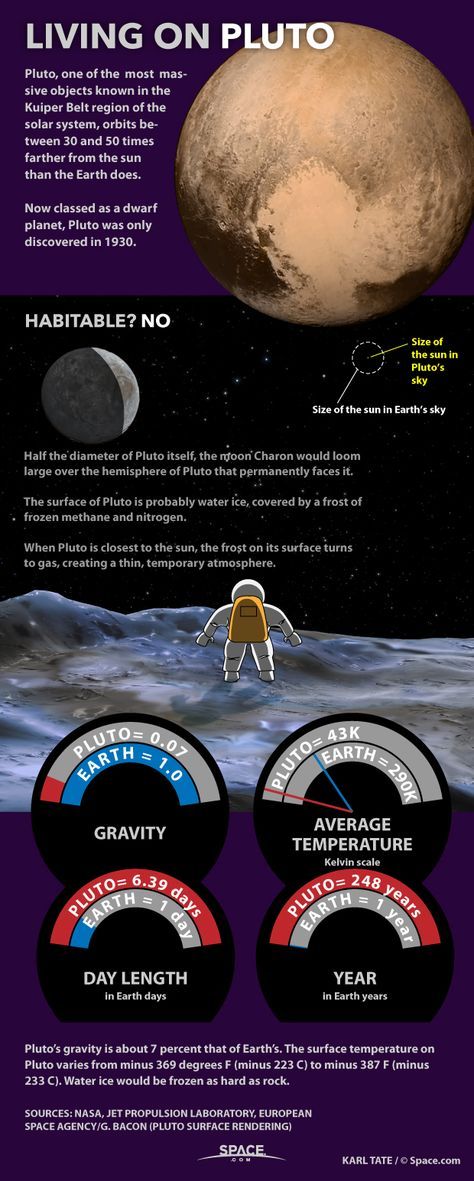 In other words, it is easy for us to launch a rat into space, but it is already much more difficult to study its genes. Nevertheless, our field of science is coming out of a breakthrough. New devices are appearing in laboratories. young employees are returning from abroad after long internships armed with the latest methodological achievements. to say a seditious thought: perhaps more money should be invested in subtle basic experiments, new experimental equipment. Unfortunately, not everyone understands that carrying out practical developments without fundamental scientific support will only mean a return to the antediluvian method of "trial and error" (which in the end will cost society much more). One should not expect everyday sensations from science, one should not demand momentary miracles from it. As historical experience shows, investments in science always pay off, but not always immediately.
In other words, it is easy for us to launch a rat into space, but it is already much more difficult to study its genes. Nevertheless, our field of science is coming out of a breakthrough. New devices are appearing in laboratories. young employees are returning from abroad after long internships armed with the latest methodological achievements. to say a seditious thought: perhaps more money should be invested in subtle basic experiments, new experimental equipment. Unfortunately, not everyone understands that carrying out practical developments without fundamental scientific support will only mean a return to the antediluvian method of "trial and error" (which in the end will cost society much more). One should not expect everyday sensations from science, one should not demand momentary miracles from it. As historical experience shows, investments in science always pay off, but not always immediately.
The editors would like to thank Doctor of Biological Sciences B.S. Shenkman, Doctor of Medical Sciences I. M. Larina and Doctor of Medical Sciences L.B. Buravkova for their help in preparing the material.
M. Larina and Doctor of Medical Sciences L.B. Buravkova for their help in preparing the material.
Gravity
Despite the fact that gravity is the weakest interaction between objects in the Universe, its importance in physics and astronomy is enormous, since it is able to influence physical objects at any distance in space.
Contents:
Related materials
The discovery of the law of gravity is attributed to the famous English physicist Isaac Newton. Probably, many of you know the story of an apple that fell on the head of a famous scientist. Nevertheless, if you look deep into history, you can see that the presence of gravity was thought about long before his era by philosophers and scientists of antiquity, for example, Epicurus. Nevertheless, it was Newton who first described the gravitational interaction between physical bodies within the framework of classical mechanics. His theory was developed by another famous scientist - Albert Einstein, who in his general theory of relativity more accurately described the influence of gravity in space, as well as its role in the space-time continuum.
Newton's law of universal gravitation says that the force of gravitational attraction between two points of mass separated by a distance is inversely proportional to the square of the distance and directly proportional to both masses. The force of gravity is long-range. That is, regardless of how a body with mass moves, in classical mechanics its gravitational potential will depend purely on the position of this object at a given moment in time. The greater the mass of an object, the greater its gravitational field - the more powerful the gravitational force it has. Such cosmic objects as galaxies, stars and planets have the greatest force of attraction and, accordingly, rather strong gravitational fields.
Gravitational fields
Earth's gravitational field
Gravitational field is the distance within which the gravitational interaction between objects in the Universe takes place. The greater the mass of an object, the stronger its gravitational field - the more noticeable its impact on other physical bodies within a certain space. The gravitational field of an object is potentially. The essence of the previous statement is that if we introduce the potential energy of attraction between two bodies, then it will not change after the latter move along a closed contour. From here emerges another famous law of conservation of the sum of potential and kinetic energy in a closed circuit.
The gravitational field of an object is potentially. The essence of the previous statement is that if we introduce the potential energy of attraction between two bodies, then it will not change after the latter move along a closed contour. From here emerges another famous law of conservation of the sum of potential and kinetic energy in a closed circuit.
In the material world, the gravitational field is of great importance. It is possessed by all material objects in the Universe that have mass. The gravitational field can influence not only matter, but also energy. It is due to the influence of the gravitational fields of such large space objects as black holes, quasars and supermassive stars that solar systems, galaxies and other astronomical clusters are formed, which are characterized by a logical structure.
The latest scientific data show that the famous effect of the expansion of the Universe is also based on the laws of gravitational interaction. In particular, the expansion of the Universe is facilitated by powerful gravitational fields, both small and its largest objects.
Gravitational radiation
Gravitational radiation in a binary system
Gravitational radiation or gravitational wave is a term first introduced into physics and cosmology by the famous scientist Albert Einstein. Gravitational radiation in the theory of gravity is generated by the movement of material objects with variable acceleration. During the acceleration of the object, the gravitational wave, as it were, “breaks away” from it, which leads to fluctuations in the gravitational field in the surrounding space. This is called the gravitational wave effect.
Although gravitational waves are predicted by Einstein's general theory of relativity, as well as other theories of gravity, they have never been directly detected. This is primarily due to their extreme smallness. However, there is circumstantial evidence in astronomy that can confirm this effect. Thus, the effect of a gravitational wave can be observed on the example of the approach of binary stars.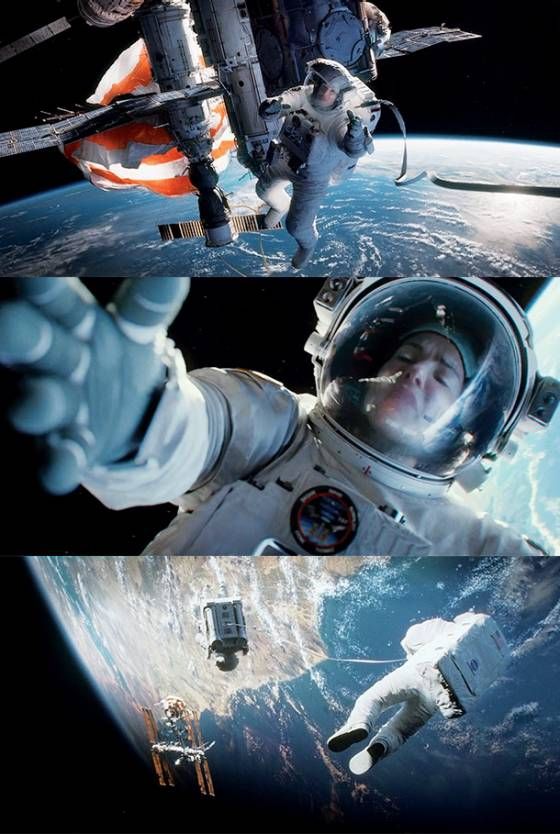 Observations confirm that the rate of approach of binary stars to some extent depends on the loss of energy of these space objects, which is presumably spent on gravitational radiation. Scientists will be able to reliably confirm this hypothesis in the near future with the help of a new generation of Advanced LIGO and VIRGO telescopes.
Observations confirm that the rate of approach of binary stars to some extent depends on the loss of energy of these space objects, which is presumably spent on gravitational radiation. Scientists will be able to reliably confirm this hypothesis in the near future with the help of a new generation of Advanced LIGO and VIRGO telescopes.
Interesting effects of gravity
Related materials
There are two concepts of mechanics in modern physics: classical and quantum. Quantum mechanics was derived relatively recently and is fundamentally different from classical mechanics. In quantum mechanics, objects (quanta) have no definite positions and velocities, everything here is based on probability. That is, an object can occupy a certain place in space at a certain point in time. It is impossible to reliably determine where he will move next, but only with a high degree of probability.
An interesting effect of gravity is that it can bend the space-time continuum.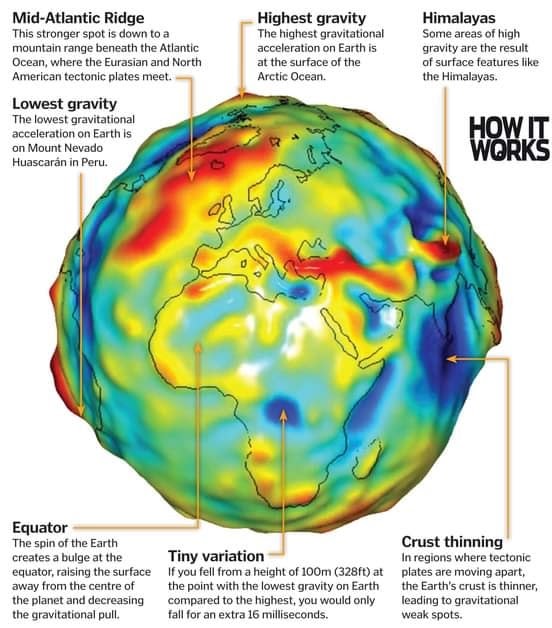 Einstein's theory says that in the space around a bunch of energy or any material substance, space-time is curved. Accordingly, the trajectory of particles that fall under the influence of the gravitational field of this substance changes, which makes it possible to predict the trajectory of their movement with a high degree of probability.
Einstein's theory says that in the space around a bunch of energy or any material substance, space-time is curved. Accordingly, the trajectory of particles that fall under the influence of the gravitational field of this substance changes, which makes it possible to predict the trajectory of their movement with a high degree of probability.
Theories of Gravity
Today scientists know more than a dozen different theories of gravity. They are divided into classical and alternative theories. The most famous representative of the former is the classical theory of gravity by Isaac Newton, which was invented by the famous British physicist back in 1666. Its essence lies in the fact that a massive body in mechanics generates a gravitational field around itself, which attracts smaller objects to itself. In turn, the latter also have a gravitational field, like any other material objects in the Universe.
The next popular theory of gravity was invented by the world famous German scientist Albert Einstein at the beginning of the 20th century. Einstein managed to more accurately describe gravity as a phenomenon, and also to explain its action not only in classical mechanics, but also in the quantum world. His general theory of relativity describes the ability of such a force as gravity to influence the space-time continuum, as well as the trajectory of elementary particles in space.
Einstein managed to more accurately describe gravity as a phenomenon, and also to explain its action not only in classical mechanics, but also in the quantum world. His general theory of relativity describes the ability of such a force as gravity to influence the space-time continuum, as well as the trajectory of elementary particles in space.
The most accurate gravity map of the Earth
Among the alternative theories of gravity, perhaps the most attention deserves the relativistic theory, which was invented by our compatriot, the famous physicist A.A. Logunov. Unlike Einstein, Logunov argued that gravity is not a geometric, but a real, fairly strong physical force field. Among the alternative theories of gravity, scalar, bimetric, quasi-linear and others are also known.
Interesting facts
- For people who have been in space and returned to Earth, it is quite difficult at first to get used to the force of the gravitational influence of our planet.
